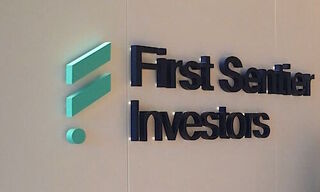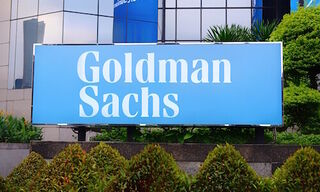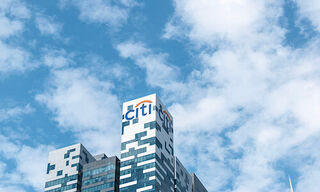The Big Bet on Falling Interest Rates
The stock market rally in November and December is an indication of how investors are positioning themselves for the new year. No matter how loudly the heads of central banks around the world warn of major uncertainty, markets are anticipating interest rate cuts.
The decision by central banks to hold back in December is seen as final confirmation of what is already almost considered certain: the cycle of interest rate hikes is over. Interest rates in the USA, the eurozone, and Switzerland have reached their maximum level.
Observers at the Swiss National Bank (SNB) viewed the downward adjusted inflation expectation curve as clear confirmation of this view. Along with the relatively good economic growth in this country and the robust job market, it is now widely expected the Swiss National Bank will have room for interest rate cuts, starting from summer.
Runway Visible From Window
In the USA, a soft landing is definitely one of the most commonly used expressions being used to describe what is expected to happen to the economy. If the US Federal Reserve, under President Jerome Powell (image below), really manages to lower inflation towards the target value without simultaneously stifling the economy, that would even be a first.
Why? Because this has never been achieved. The transition from rise to decline has always triggered, at a minimum, a technical recession, i.e., a decrease in gross domestic product in two consecutive quarters.
According to an economist, the soft landing has not yet occurred, but it is possible to see the runway through the cockpit window.

(Image: Shutterstock)
Three Reductions in 2024?
When the Federal Reserve’s Open Market Committee met up in mid-December, they made statements that market participants interpreted as the green light for their hopes for the future trajectory of interest rates. According to Powell, raising interest rates further in the current environment was not the appropriate course of action. Although the Fed also signaled it was still too early for interest rate cuts, it was at least now a topic of discussion.
Just a few weeks earlier, Powell stressed he would be willing to go for another hike if necessary. And it was just this change in opinion that led to a downturn in the dollar and fueled the stock, bond, and precious metal markets.
The «dot plot,» which illustrates future interest rate trends, has raised hopes for three cuts in 2024. Next year might even see four interest rate cuts, which would bring the US benchmark interest rate down to 2.5 percent.
Recessive Trends in Euro Countries
In the eurozone, on the other hand, a soft landing is out of the question. The recessive trends, as seen for example in German industrial production, are just too large. In the third quarter, eurozone GDP decreased by 0.1 percent compared with the previous quarter. Although the forecasts had only anticipated stagnation, a recession seems quite possible due to cautious expectations for the fourth quarter.
Given the weakening economy and clearly declining inflation, the currency guardians of the European Central Bank (ECB), including ECB President Christine Lagarde, decided to keep the benchmark interest rate at 4.50 percent at their last monetary policy meeting of the year. Interest rates are likely to remain sufficiently restrictive for as long as necessary.

(Image: Keystone)
Crucial here will be what happens to inflation in January and February. If there is no setback, i.e., a resumption of strong price rises, then there should be nothing standing in the way of a reduction in spring, say observers. Based on money market data, a rate cut seems possible as early as March, but April is the more likely date.
Price Stability in Switzerland Seems Assured
The SNB’s continued adherence to the current key interest rate of 1.75 percent is a signal of a more relaxed approach. Inflation expectations are flatter than before. The latest forecast suggests that inflation will rise to 2 percent in two quarters in 2024. The cited reasons are higher electricity prices and rents, as well as the increase in value added tax. But after that, inflation is set to gradually sink and linger at 1.6 percent from the second quarter of 2025 until the third quarter of 2026.
Even so, SNB President Thomas Jordan (image below) never tires of stressing how much uncertainty there still is. The rate setter says he will closely monitor developments and adjust monetary policy «if necessary» to ensure price stability in the medium term.

(Image: Keystone)
Keeping One’s Options Open
Even UBS CEO Sergio Ermotti questioned the reliability of price forecasts in a recent interview. «One thing I’ve learned is that you shouldn’t try to make predictions about the next few months – it’s almost impossible,» he told «Le Matin Dimanche» (paid article). «Nevertheless, I’m still not persuaded that inflation is truly under control at this particular time.»
«The trend seems favorable, but we need to see if it continues. When inflation approaches the 2 percent target in all major economies, central banks might opt for a slight easing,» says the UBS CEO. «In such an environment, it’s very important to remain flexible.»



























